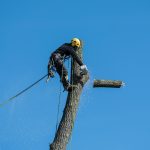Quick start: preparing your historic Edinburgh townhouse for smart thermostat installation
Preparing a historic Edinburgh townhouse for smart thermostat setup requires careful attention to both the heating system and building specifics. First, assess your heating system’s compatibility and age. Many older systems might lack modern wiring or use non-standard controllers, so check if your current system supports digital controls or if adapters are necessary.
Next, identify challenges unique to historic properties. Thick stone walls can interfere with wireless signals, so consider signal boosters or wired connections. Additionally, listed building regulations may restrict modifications; always consult heritage guidelines before drilling or altering surfaces.
Have you seen this : Reliable bathroom fitters in bexleyheath for your home upgrade
To ensure a smooth setup, prepare a pre-installation checklist with all required tools and materials. Basics include screwdrivers, voltage testers, and possibly specialized wiring equipment. Having these ready prevents delays and potential damage.
By addressing these elements—compatibility, physical property constraints, and tools—you’ll create an ideal foundation for installing your smart thermostat in your historic Edinburgh townhouse. This thorough preparation minimizes risks and supports effective integration of modern heating controls in heritage homes.
Also read : Essential considerations for selecting the ideal wood burning stove for your norfolk cottage
Quick start: preparing your historic Edinburgh townhouse for smart thermostat installation
A crucial part of historic townhouse preparation is thoroughly assessing your heating system’s compatibility and age before any smart thermostat setup Edinburgh process begins. Older heating systems commonly found in Edinburgh townhouses may rely on outdated wiring or controls incompatible with modern thermostats. To get an accurate understanding, test existing wiring with a voltage tester and consult system documentation when available.
Property-specific challenges must be addressed early. Thick stone walls typical of Edinburgh townhouses can sharply reduce wireless signal strength, hampering thermostat connectivity. Solutions include placing the thermostat near central heating components or investing in signal repeaters. Also, listed building regulations limit modifications, so securing necessary permissions helps avoid complications.
A well-assembled pre-installation checklist is indispensable. Beyond screwdrivers and voltage testers, include wire strippers, appropriate mounting hardware, and possibly adapters for non-standard wiring. Having these items ready ensures the installation proceeds efficiently and safely, reducing risk of damage or extended work time.
Taking these preparatory steps minimizes installation hurdles, making your smart thermostat setup Edinburgh both practical and respectful of your home’s heritage.
Quick start: preparing your historic Edinburgh townhouse for smart thermostat installation
Preparing your historic Edinburgh townhouse begins with a detailed assessment of your heating system’s compatibility and age. Older systems may operate on non-standard voltages or outdated wiring layouts, making it essential to verify this early. Use a voltage tester to safely check your existing setup and consult any available system documentation to understand its electrical characteristics.
Addressing property-specific challenges is crucial. Edinburgh’s thick stone walls can severely reduce wireless signal strength, resulting in unreliable communication between the smart thermostat and the heating system. To mitigate this, consider signal repeaters or placing the thermostat near central heating units to ensure optimal performance.
Listed building regulations impose strict limits on modifications, so historic townhouse preparation must include securing necessary permissions before drilling or running new cabling. Ignoring these can lead to legal complications and damage to heritage features.
Gathering the right tools and materials for your pre-installation checklist is fundamental. Essential items include voltage testers, wire strippers, screwdrivers, mounting hardware, and adapters for older wiring. Being fully equipped prevents installation delays and safeguards your property during the smart thermostat setup Edinburgh process.
Quick start: preparing your historic Edinburgh townhouse for smart thermostat installation
Preparation for smart thermostat setup Edinburgh hinges on fully understanding your heating system’s compatibility and age. Older systems in historic townhouses often use outdated wiring or controls, so evaluating whether your system can integrate with modern devices is critical. Employ a voltage tester and examine system manuals to clarify your setup’s electrical parameters.
Identifying challenges unique to these properties is vital. Thick stone walls common in Edinburgh can obstruct wireless signals, affecting the thermostat’s communication with the heating system. To overcome this, position the thermostat close to key heating equipment or use signal boosters designed for historic environments.
Historic townhouse preparation must also factor in legal and preservation constraints. Listed building regulations often restrict invasive modifications such as drilling or running new cables. Securing permissions beforehand prevents damage to heritage features and ensures compliance.
Equipping yourself with a comprehensive pre-installation checklist guarantees smooth progress. Essential tools include screwdrivers, wire strippers, voltage testers, adapters for legacy wiring, and mounting hardware. This readiness minimizes disruptions and safeguards your property during the smart thermostat setup Edinburgh process.
Quick start: preparing your historic Edinburgh townhouse for smart thermostat installation
When preparing for smart thermostat setup Edinburgh, a detailed evaluation of your heating system’s compatibility and age remains paramount. Historic townhouses often feature older boilers or heating units operating at voltages or wiring standards different from modern equipment. Testing your system with a voltage tester and reviewing any available manuals clarify whether it supports digital controls or requires adapters.
Addressing property-specific obstacles is vital. The characteristic thick stone walls undermine wireless signals, creating communication gaps between thermostat and boiler. To counteract this, positioning devices near heating units or integrating signal boosters can maintain reliable connectivity during the setup. Furthermore, listed building regulations often restrict invasive modifications like drilling or cable routing. Ensuring you secure appropriate permissions during historic townhouse preparation mitigates legal risks and protects heritage features.
A comprehensive pre-installation checklist equips you for success. Essential tools include screwdrivers, wire strippers, mounting brackets, voltage testers, and adapter kits for legacy wiring. Collecting these prevents installation delays and protects your property from unintended damage, streamlining your smart thermostat setup Edinburgh process efficiently and with minimal disruption.










